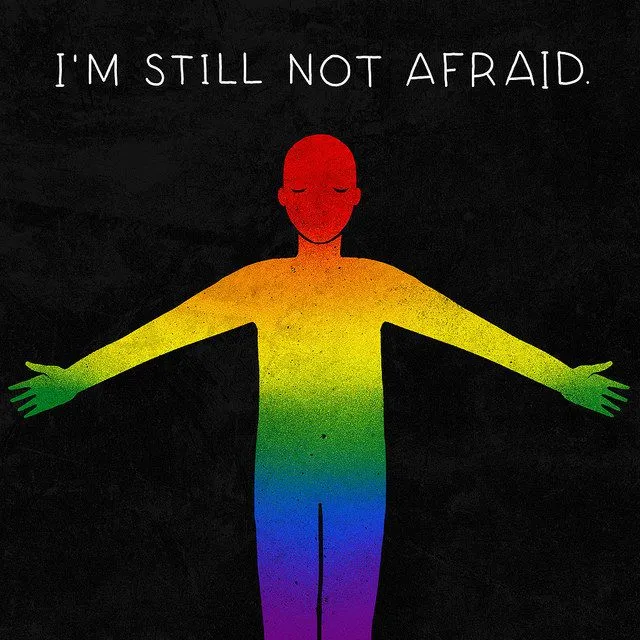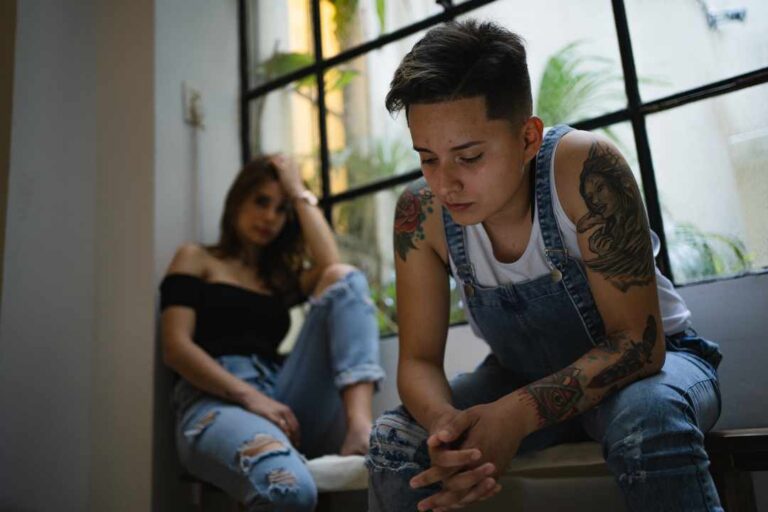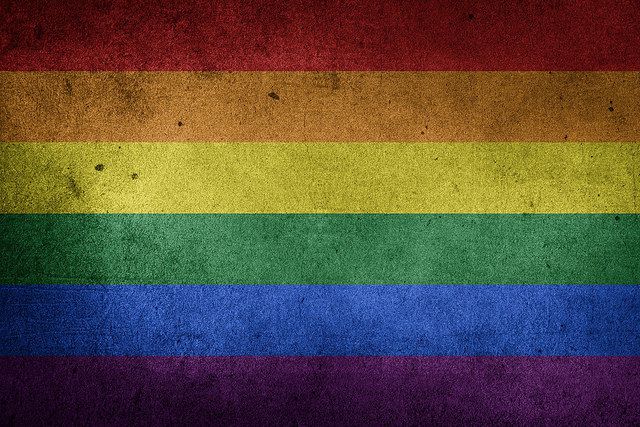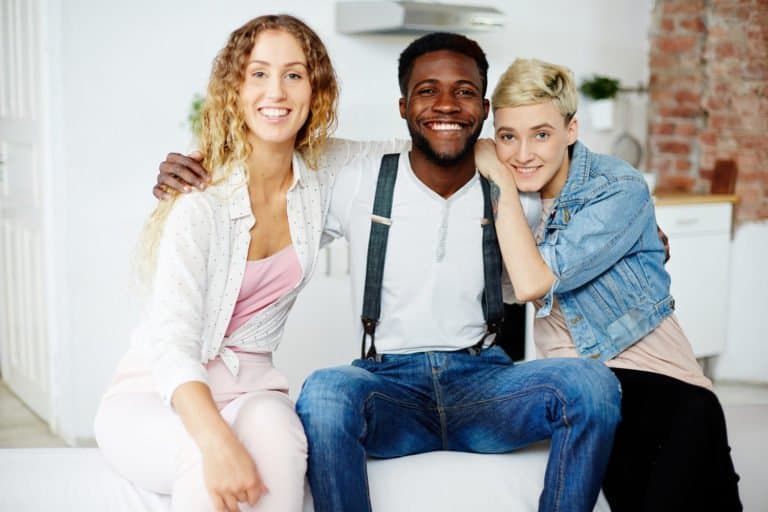Homophobia is a big problem in Australia.
The Human Rights Commission reports that 6 in 10 LGBTQ people experience verbal homophobic abuse, 2 in 10 experience physical abuse and 1 in 10 experience other types of abuse due to their sexual or gender diversity.
This highlights the discrimination faced by the LGBTQ community and the tendency for these abuses to cause people to internalise discrimination within themselves.
For many LGBTQ theorists, the word homophobia should not be used because of the changed consensus on attitudes about homosexuality. Smith, Oades and McCarthy identified many different definitions of homophobia that underlines the changing nature of gender and sexuality attitudes.
Changing attitudes about homosexuality
Attitudes about homosexuality have shifted from seeing queer people as ‘sinners’, to being seen as having a pathological illness.
The Diagnostic and Statistical Manual (DSM) recorded homosexuality as a mental illness until the early 1970s. Since then, the community has embraced homosexuality more and has accepted diverse sexuality and gender more broadly.
Due to these changes, many authors call for the removal of the word ‘homophobia’ to a more general term of heterosexism which focuses on the domination of heterosexual norms.
While the attitudes of homosexuality have changed over time there is still ignorant fear based attitudes about homosexuality, resulting in discrimination and hate crimes towards the LGBTI communities.
Herek defines heterosexism as a system that ‘denies, denigrates and stigmatises any non heterosexual form of behaviour, relationships of community’. This general term encompasses many different aspects of what is considered ‘normal’ in society. And any different practices or ways of being are seen as less-than, or suppressed.
Discrimination is experienced differently
It is important to understand that discrimination is experienced differently by each sexual minority group in the LGBTQ acronym. So homophobic behaviours are varied and experienced differently for Lesbians, Gay men, and same-sex attracted people.
Homophobia can be a direct, in-your-face experience when someone uses horrible language to your face, or indirectly in government policies. This was clearly the case for criminalising ‘homosexual acts’ or ‘sodomy’ within Australian states. So, while you may not experience a direct homophobic slur on the street, homophobia is present and impactful on many people.
Homophobia and heterosexism
Experiencing homophobia or heterosexism prevents the LGBTQ community from accessing help and connecting with others. This is due to being treated as inferior to heterosexuals and the long history of being placed in this position. Of particular concern is gay people being treated as having a mental health issue because of their sexuality.
In therapy, gay men were pushed to have sex with women in order to ‘cure them’. Or forced to go to camps where electrocution was used to basically shock the gay away. Religious camps were formed to also ‘pray the gay away’, and young teenagers and adults were moved to these camps until they were no longer homosexual.
This idea of fixing homosexuality inherently underlines being gay as wrong. As you can imagine, these ways of treating homosexuality have caused fears towards mental health professionals from the LGBTQ community and their view of them in a therapy session.
Heterosexism can be quite subtle and is often missed by many people. A sentence like ‘do you have a girlfriend’ to a male identifies an assumption of someone’s sexuality with being open to the idea of the male person having a boyfriend or even a partner without a gender.
These simple heteronormative assumptions assume sexuality and, at times, force people to either correct the person, or just answer the question. So in effect, there is persuasion towards needing to be heterosexual until you state otherwise, or that being heterosexual is ‘normal’.
The affect on a person identifying as gay or lesbian may be that they internalise thoughts that they are bad because they are gay or ‘not normal’. This is commonly called internalised homophobia.
Internalised Homophobia
Internalised homophobia is the gay person’s direction of negative social attitudes towards the self, leading to a devaluation of the self and resultant internal conflicts and poor self regard. So there are two components here:
- The barrage of ‘normal’ attitudes about being heterosexual is ‘normal’ and ‘right’.
- The gay or lesbian person internalising these thoughts and negatively viewing themselves because of this.
So, in these two parts there is the individual’s view of themselves and also what they think ‘others’ will think if they identify as being homosexual.
In counselling work, there is a need to first focus on the person’s view of themselves and break down the internal thoughts. Then move to identifying allies the person can feel comfortable with so it feels less like a ‘us’ and ‘them’ battle.
Internalised Homophobia is a very common for gay and lesbian people. Specifically for those who have grown up in a religious family. Or a family where there hasn’t been many interactions with gay people.
So what does internalised homophobia look like?
- Poor view of being gay and aligning this with being bad or ‘not normal’
- Sometimes the person can come across as homophobic towards others
- There might be some people who go to extreme lengths to deny their sexuality or hide it.
- There can be a strong alignment with the person’s gender roles, eg males being tough and females being feminine
Can a gay person be homophobic?
Yes they can. It would be the same if someone of a certain race was racist towards someone else. If someone gay was homophobic, this might point to them experiencing some internalised homophobia.
Let’s also not forget that there are big differences in presentation of what it ‘looks like to be gay’. Even within the community there is judgement. We need to show respect in the community and model how we want to be treated.
A personal experience of Internalised Homophobia
Stuart’s story
I grew up in a small country town and was heavily connected with a local church. My friendships revolved around the church and i spent a large amount of time at bible studies, church services and being part of the running of things.
At a young age I made commitment to not drink, have sex or do anything against the bible. I was seen as a sweet sensitive kid that was passionate. On the outside this is what people saw throughout my teenage years but what they didn’t see was the double life…
Secretly, I knew I liked guys and this was very much against my beliefs. And I thought I could block this out because it was wrong. My beliefs trumped my internal feelings and so I tried over and over to push any urges I had down out of sight. While I found out later that quite a few people suspected I was gay, to me this battle raged on.
Being gay took a long time to come to terms with and the hardest part was breaking down the idea that being gay was wrong, connecting my homosexuality with being a bad person. I found great LGBT people and their sense of pride. This helped a lot, along with counselling to help me create a new way of thinking about being gay and what this means for my life.
I tell this story to show that there is hope in changing our negative thoughts about being gay and to encourage you towards getting some help with it.
It’s OK to be you
Finding yourself takes time and then being comfortable with yourself when you do can be hard. Whether you’re different because of your sexual orientation, gender identity, race or interests, your uniqueness can be a point of positive interest.
The term minority stress has been coined to underline that being part of a small group by itself creates stress. This is why pride month and events like these are a big celebration of our difference and used to show others that being LGBTQ is special.
Getting some help
Are you, or a loved one or friend experiencing homophobia, internalised homophobia or both? Please reach out for support. We need to do more work to discuss these issues and challenge heteronormative ways of thinking.
If you need further orientation on LGBTQ+ support, feel free to check out the articles we have prepared for you.
Our team at Safe Place Therapy can work with you. Slow down thinking and work through horrible experiences of homophobia. Break down any internalised homophobia that might be occurring.



